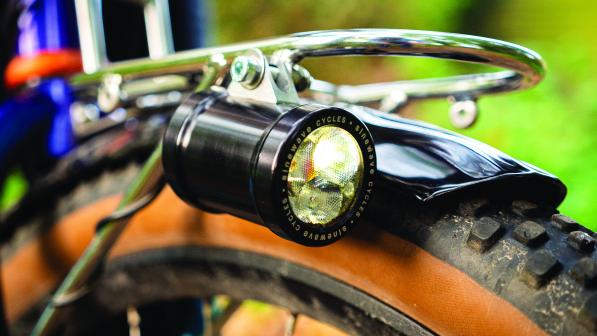Knowhow: What lights do I need?

It’s that time of year again. After the glorious long days of summer, autumn has arrived and brought with it a rather unwelcome guest: early darkness. With British Summer Time soon to be consigned to memory, now is a good time to get ready to light up your bike.
Whether you need to light up your off-road adventures, or just want to remain visible when popping to the shops, there is a light for you. The key is working out where you do most of your riding.
Under street lights
If most of your rides are in street-lit areas, the primary role of your lights is to make you conspicuous; you don’t need a strong beam. Flashing or pulsing lights work well under street lights. Other road users can still track your position thanks to the street lights, and they’re more likely to notice you initially.
Since traffic will be travelling slower – 30mph for example – being seen from a huge distance away isn’t vital. But there will be junctions so it’s important that your lights are visible through a wide arc front and rear, not just directly in front or behind. Dynamo lights need a standlight as you’ll likely be stopping and starting often.
Unlit roads
Without street lights, your front lamp must have a beam powerful enough to light the way further ahead than your riding speed’s stopping distance. Avoid the temptation to fit a mountain biking light that will dazzle other road users. A road-specific light with a focused beam and around 300-500 lumens should be sufficient.
If you want brighter, look for a beam cut-off at the top of the lens and/or the facility to switch to a lower output to instantly ‘dip your headlight’.
The rear light needs to be bright enough to be seen from far behind as traffic may be travelling fast. Look for 30-50 lumens or more. Avoid using a flashing rear light unless you also use a steady one. A flasher won’t signpost your trajectory or proximity in the dark.
Off-road trails
Mountain biking at night requires lots of lumens. Most dynamo setups won’t produce enough – although the Sinewave Beacon 2 and Exposure Revo may, depending on your riding. As a rule of thumb, you’ll want at least 800 lumens from your main light. More is better. A broader beam that gives you peripheral vision is helpful, as is a secondary light with a tighter-focused spot on your helmet.
For the rear light, saddle rail mounting is useful as it doesn’t preclude a dropper seatpost.
Lighting law
To ride on the road legally between sunset and sunrise, your bike (not you) must be fitted with an approved white front light and an approved red rear light. You also need a red rear reflector and amber pedal reflectors. Lights that can only flash must emit at least 4 candela (~50 lumens). Lights that have a steady mode must be marked as conforming to BS6102/3 or an equivalent EC standard.
In practice, it’s difficult to find approved lights in the shops, unless you run dynamo lights, which usually meet the German StVZO standard. A small number of battery lights also do and are marked as such. But don't worry too much about that: evidence suggests that you won’t be stopped by the police as long as you fit bright lights of the correct colour that don’t dazzle.








